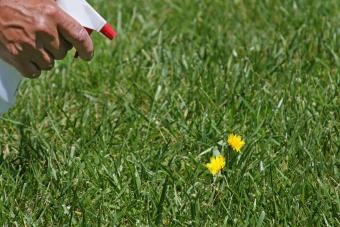
While it may be easy to dismiss the importance of dirt, it's a fact soil is vital to humankind. Stop soil erosion by finding ways to conserve soil. There are several methods of soil conservation that can be achieved through agricultural practices and measures you take at home.
Agriculture Soil Conservation
Three ways to conserve soil through agricultural means follow. Each method requires specific considerations of the type of land and its use.
1. Practice No-Till farming
With no-till farming, crops are allowed to remain rather than being plowed under at the end of the season. This practice keeps soil anchored in place rather than having bare ground exposed to wind and water.

2. Use Terrace Farming
This type of farming uses the topography of the land to slow water flow through a series of terraces. This manipulation of the water flow prevents it from gathering speed and washing soil away from farmlands.

3. Practice Contour Farming
Contour farming replicates the effects of terrace farming, but on a smaller scale. Rather than planting crops in straight vertical rows, crops are planted following the contour of the landscape. Crops planted up and down hillsides create pathways for water to flow. Crops planted parallel to the land slow the flow of water that prevents soil erosion.

Home Methods
If you're not a farmer, try these methods at home. There are a few things you can do with your home garden to conserve soil.
4. Reduce Impervious Surfaces
Impervious surfaces, such as driveways and patios, allow precipitation to flow freely over them. Water flow gains momentum when moving over such surfaces and can then erode stream banks and lakeshores. A good compromise is to use paving stones rather than a concrete slab for your patio to allow the water to percolate down into the soil.

5. Plant a Rain Garden
A rain garden is a shallow depression in your yard which will collect precipitation washing over impervious surfaces. It prevents soil erosion and gives you an opportunity to grow wetland plants.

6. Use a Rain Barrel
You can place a rain barrel underneath a downspout to collect the water that runs off of your roof. Your roof, after all, is another impervious surface. You can use the water you collect for your lawn and garden. In this way, you can conserve water and soil.

Resource Planning
Think ahead and plan to conserve soil. There are several ways you can take advantage of nature land features or add to them to increase conserving surrounding soil.
7. Plant Windbreaks
Windbreaks prevent soil erosion by slowing the force of the wind over open ground. You can plant trees or shrubs in your windbreak. In addition to preventing erosion, these plantings will prevent snow from drifting onto your driveway or into the road. They can also protect your home from wind damage.

8. Restore Wetlands
Wetlands are one of the most effective ways to prevent soil erosion. Wetlands act as natural sponges, absorbing rainwater and preventing it from carrying the soil away. They also provide a habitat for birds and other wildlife and help prevent water pollution.

9. Plant Buffer Strips Along Stream Banks
Buffer strips help hold stream banks intact during times of flooding. They also prevent runoff from entering waterways. Buffer strips can include a mixture of grasses, shrubs, and trees.

10. Re-Establish Forest Cover
The re-establishment of forest cover provides an extensive tree-root network that offers a long-term solution to soil erosion associated with deforestation. It can function both as a windbreak and a means to anchor soils in place.

Preserve Your Dirt
Any of these 10 ways to conserve soil will help protect this important natural resource and provide a solution for one of the most important environmental issues. Once you begin using soil conservation methods, you'll no longer look at soil as mere dirt.







